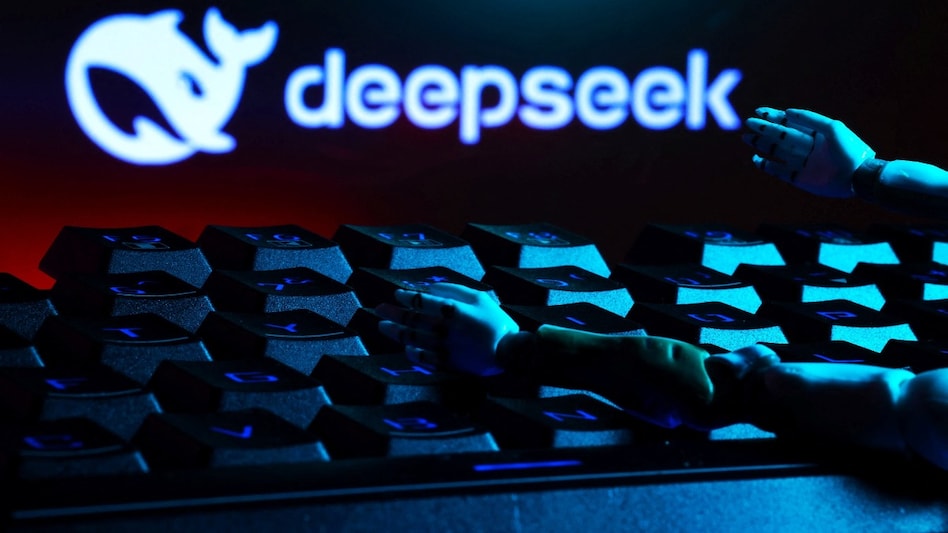Artificial intelligence (AI) has revolutionized the world of trading, enabling traders to analyze vast amounts of data, identify patterns, and execute strategies with precision. DeepSeek, an advanced AI platform, can be trained to assist in trading by leveraging machine learning techniques. However, training an AI system like DeepSeek requires careful planning, data preparation, and iterative refinement. In this article, we’ll walk you through the process of training DeepSeek to trade effectively.
We’ve built an advanced DeepSeek-powered trading bot to trade for you automatically! Let AI analyze market trends and maximize your profits effortlessly.
1. Define Your Trading Objective
The first step in training DeepSeek is to clearly define your trading goals. Ask yourself:
- Are you focusing on short-term day trading or long-term investments?
- What markets are you targeting (e.g., stocks, forex, cryptocurrencies)?
- What is your risk tolerance?
- What metrics will define success (e.g., profit margins, risk-adjusted returns)?
Having a clear objective will guide the entire training process and help you measure the effectiveness of your AI model.
2. Gather and Prepare Data
AI models like DeepSeek rely on high-quality data to make accurate predictions. The data you collect will serve as the foundation for training your trading model. Here’s what you need to do:
- Collect Historical Data: Gather historical price data, trading volumes, and other relevant market indicators (e.g., moving averages, RSI, MACD).
- Include Alternative Data: Consider incorporating alternative data sources such as news sentiment, social media trends, or economic indicators.
- Clean and Preprocess Data: Remove outliers, handle missing values, and normalize the data to ensure consistency.
- Label Data: If you’re using supervised learning, label your data with target outcomes (e.g., buy, sell, or hold signals).
3. Choose the Right Model
DeepSeek can utilize various machine learning models depending on your trading strategy. Common models include:
- Supervised Learning: For predicting price movements or classifying trade signals.
- Reinforcement Learning: For optimizing trading strategies through trial and error.
- Deep Learning: For analyzing complex patterns in large datasets using neural networks.
Select a model that aligns with your trading objectives and the complexity of your data.
4. Train the Model
Once your data is ready and the model is selected, it’s time to train DeepSeek. Follow these steps:
- Split Data: Divide your dataset into training, validation, and test sets (e.g., 70% training, 20% validation, 10% testing).
- Feature Engineering: Identify the most relevant features (e.g., price trends, volatility) that will help the model make accurate predictions.
- Train the Model: Use the training dataset to teach the model to recognize patterns and make decisions.
- Validate the Model: Test the model on the validation set to ensure it generalizes well to unseen data.
5. Evaluate Performance
After training, evaluate the model’s performance using key metrics such as:
- Accuracy: How often the model’s predictions are correct.
- Profitability: The model’s ability to generate returns.
- Risk Metrics: Measures like Sharpe ratio, maximum drawdown, and volatility.
If the model underperforms, revisit your data, features, or model architecture to identify areas for improvement.
6. Backtest the Strategy
Before deploying DeepSeek in live trading, backtest the model on historical data to see how it would have performed in the past. This helps you:
- Identify potential flaws in the strategy.
- Assess the model’s robustness under different market conditions.
7. Deploy and Monitor
Once you’re satisfied with the model’s performance, deploy it in a live trading environment. However, keep these points in mind:
- Start Small: Begin with a small amount of capital to minimize risk.
- Monitor Performance: Continuously track the model’s performance and make adjustments as needed.
- Adapt to Market Changes: Markets are dynamic, so regularly retrain the model with new data to keep it relevant.
8. Iterate and Improve
Training DeepSeek to trade is an ongoing process. As markets evolve, so should your AI model. Regularly:
- Collect new data.
- Retrain the model to incorporate recent trends.
- Experiment with new features or algorithms to enhance performance.
Conclusion
Training DeepSeek to trade is a powerful way to leverage AI for financial success. By defining clear objectives, preparing high-quality data, and iteratively refining your model, you can create a robust AI trading system. However, remember that no model is perfect, and trading always involves risk. Use DeepSeek as a tool to augment your decision-making, not replace it entirely. With the right approach, you can unlock the full potential of AI in trading and stay ahead in the competitive financial markets.
We’ve built an advanced DeepSeek-powered trading bot to trade for you automatically! Let AI analyze market trends and maximize your profits effortlessly.







